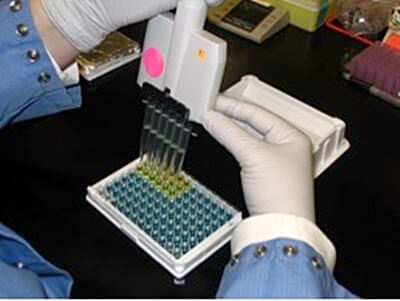Things to consider when designing a Salivary Bioscience Study?

Salivary Bioscience benefits complex, multi-disciplinary studies by enabling researchers to collect valuable objective measurements without the use of invasive biospecimens. However, as with any biological specimen, certain limitations exist and should be closely understood and evaluated when designing your salivary bioscience study. Below, we’ve assembled some major considerations and main FAQs related to overall study design.
Carefully Consider Your Analytes and SNPs
The NIDCR recently completed the library for the salivary proteome. The project identified more than 1,000 anayltes present in oral fluids. The implications are profound. This knowledge enables a very wide range of analyses to be conducted now and in the future in salivary specimens. Plan your project and sample collection, handling, and storage in a way that maximizes your opportunity to take advantage of all that can be learned from this biospecimen.
Design Sample Collection Around Your Participants
Consider the frequency, timing, and volume of sample you request from participants. It’s true that saliva sampling is minimally invasive, but it is easy to add significant participant burden by designing protocols that request participants to donate more sample volume than is really needed, or more often than is really practical, and on schedules that aren’t really appropriate for the flow of their everyday life.
Review the Latest References
The salivary bioscience literature is spread across a wide range of journals from many different fields. Gathering this information can be a challenge. The field is also generating new information at a very rapid pace… faster, than the traditional print publication process can keep up with in many cases. Its important to reach out to experts in the field to be sure you have the most current information. Also, studies conducted prior to 1990 were undertaken before the advent of commercially available immunoassay protocols designed specifically for use with saliva and before saliva collection procedures were standardized. For this reason, the methods of publications that involve salivary bioscience prior to the 1990s should be reviewed carefully.
Choose a Qualified Laboratory
Start your testing off right by choosing an assay that is optimized for the sample matrix in which you are testing. Although convenient to use one assay for multiple sample types, assays designed for a multitude of sample types also plays into the ability to enhance the precision of an immunoassay. Next, make sure your assays are being performed by a highly-trained laboratory technician who follows standardized procedures and the latest industry-accepted protocols. Also realize that while many assay manufactures report the capabilities of offering low CVs, those values often don’t often correlate to real-world results. For research, inter-assay CVs of less than 15% and an intra-assay CVs of less than 10% are generally acceptable. However, with proper saliva handling and experience, Salimetrics assays perform at the lower range of less than 5%. Researchers should carefully consider the maximum %CV acceptable, as variability will reduce data confidence and harm the statistical power of the study when reporting a biological change. Researchers should compare and choose both an assay and lab that is capable of meeting or exceeding your targeted criteria for assay precision. Stratech APAC is a Salimetrics Centre of Excellence and offers a full service for the Analysis of Saliva and Hair
Understanding Statistical Analyses
Recognize and appreciate the degree of unsystematic error that can be introduced by variation in sample collection, handling and storage, as well as in how salivary immunoassays are performed. In combination with your estimates of “effect size” consider this information carefully when planning your sample size. Statistical strategies for analyzing salivary bioscience data have advanced in recent years. Check the literature for updates and contact us for advice.
